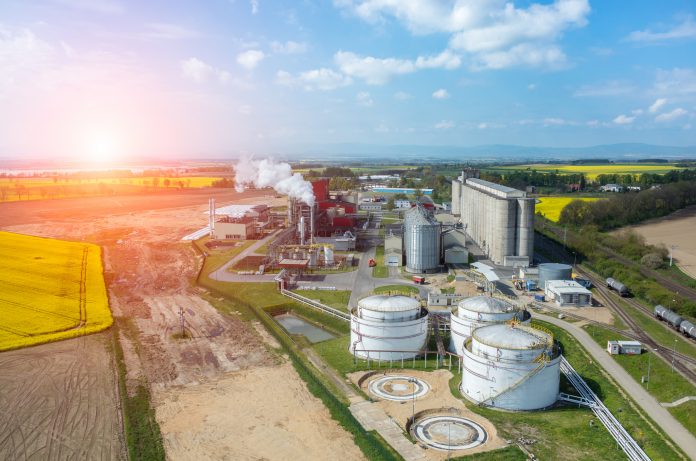Aarthi JanakiRaman, Research Director of Chemicals and Advanced Materials TechVision at Frost & Sullivan, discusses the broad potential of microbial electrosynthesis in supporting the green-energy transition and circular economy
As we continue to move towards a circular economy and explore various alternatives to reduce the dependence on fossil fuels for energy and industrial needs, research advances are geared towards exploring alternative manufacturing pathways that can produce value-added chemicals to alternative fuels.
In the last five years, microbial electrosynthesis has gained attention as a potential method for energy and waste resource, reuse, and recovery.
An microbial electrosynthesis (MES) platform can be integrated into various waste biorefining platforms. It can operate with multiple substrates, ranging from wastewater, and solid waste, including cellulosic biomass and activated sludge, to gases such as carbon dioxide to produce value-added chemicals and energy (mainly hydrogen); this is one of the main reasons for continued interest in exploring the technology as an alternative to conventional fossil fuel-based processes.
While acetate is still the key chemical produced using MES, various studies have established the viability of using MES to synthesise other chemicals, including organic acids, biofuels, and biogas, for metal recovery.
Chemical synthesis to hydrogen economy
A well-established use for MES is the synthesis of chemicals and chemical intermediates. Apart from acetate, other organic acids, such as formate and butyrate, are also produced.
The focus of MES systems is still on producing short- chain acids, considering the value-added benefit of using wastes and by-products, thereby helping in environmental remediation.
However, it can be used to manufacture other chemicals, mainly alcohols, such as ethanol and butanol. Research is also underway to study the feasibility of using MES to synthesise other chemicals and intermediates, including various short and medium-chain fatty acids and industrial chemicals such as nitrogen, phosphorus, and potassium.
One of the promising applications of MES is its role in the hydrogen economy. Substrates such as acetic acid, alcohols, cellulose, activated sludge and even industrial and domestic wastewater can produce hydrogen.
It can also address issues such as low yield that is associated with the use of photo fermentation technologies.
While the yield is still dependent on the type of substrate used, pure substrates offer a higher yield than waste and wastewater streams; integrating MES with fermentation processes can optimise yield and help in the remediation of organic matter.
In addition, its ability to produce biogas, such as methane from solid waste, CO2 and activated sludge etc., is also being explored, considering the increasing focus towards using methane as an alternative energy source.
Another interesting use of MES is for metal recovery from industrial wastewater streams and contaminated soil. Various research studies have established the theoretical potential for removing and recovering heavy metals, even at low concentrations.
Furthermore, by modifying the cathode materials used and optimising the reactor design, sequential recovery of various metals and even mixed metals can be achieved while treating waste streams simultaneously.
What’s next for microbial electrosynthesis?
MES platforms have come a long way from being considered part of MXC technologies to being treated as a viable technology platform that can significantly contribute to the transition to a bioeconomy.
However, for it to become an economically viable solution, a comprehensive, integrated approach that addresses all aspects of MES is required, from developing viable microbes, optimising reaction steps to ensure yield, and modifying reaction design to integrating renewable energy for powered requirements.
Challenges still need to be addressed to make MES acceptable on an industrial scale. Developing a viable microbial toolbox is the first step towards industrial use of MES.
In addition, advances in synthetic biology and genetic engineering can help design microbial cultures that can withstand harsh environments and help synthesise a broader range of chemicals from various feedstocks and waste streams.
Changes in the reactor design, including adapting electrodes, membranes and process conditions depending on the type of input used for chemical and energy synthesis, are needed to improve efficiency and yield.
For example, solid waste will require pre-treatment and careful monitoring of pH and temperature to help in effective hydrolysis and fermentation for hydrogen or methane generation.
Most of the research studies in the last few years focused on studying reaction conditions, improving catalytic reactions, and developing many cathodic materials.
However, to move towards a successful industrial deployment, other aspects of MES must be equally established, including improving productivity and yield and optimising reactor design, to name a few.
In addition, virtual modelling and simulation techniques, and leveraging the advances in computational modelling, can be used in designing a best-fit, modular bioreactor system that can be easily scaled up.
Another critical step towards industrial use is the need for a Life Cycle Assessment (LCA) of MES systems, mainly used for waste and wastewater remediation and hydrogen generation. Successful LCA studies can help mitigate risks and address bottlenecks compared to other biological processes while establishing techno- economic feasibility.
As a step towards industrial use of MES, its potential use in existing systems can also be simultaneously explored, especially in solid waste and wastewater treatment systems.
Integrating MES with other platforms, such as anaerobic membrane bioreactors, dark fermentation reactors, etc., can help address reactors’ challenges and help establish economic viability, especially for hydrogen production.
Considering the similarities of the MES platform to that of microbial fuel cells (MFCs), mimicking the success of reactor and process design and energy management etc., from those platforms to MES can mitigate some of the challenges towards industrial deployment and help reduce the time to market.











